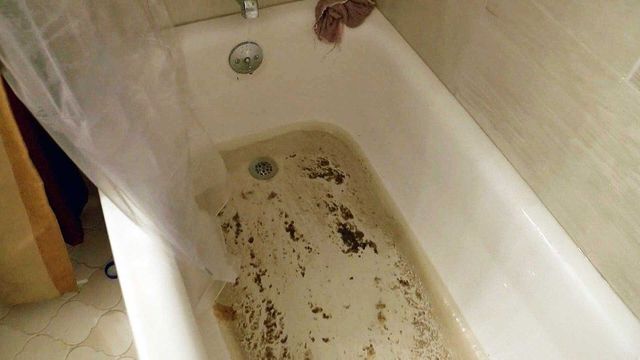Were you interested in answers concerning Why is Sewage Backing Up Into My Bathtub??

Sewage back-up in the tub can be a distressing and unsanitary problem for any kind of property owner. Not just is it bothersome, however it additionally postures serious wellness risks and suggests underlying issues with the plumbing system. Understanding why sewage is coming up via the bathtub is vital for taking proper activity to deal with the issue effectively.
Introduction to the Issue
Usual Factors for Sewer Back-up
Clogs in the Sewer Line
Among one of the most usual sources of sewer back-up is a clog in the sewer line. This can occur because of the buildup of debris, grease, or foreign objects in the pipelines, avoiding proper circulation and triggering sewer to back up right into your bathtub.
Tree Origin Invasion
Tree roots looking for wetness and nutrients can penetrate sewage system lines via little splits or joints. With time, these roots can grow and increase, creating substantial damage to the pipelines and bring about sewer backup concerns.
Recognizing the Trouble
When sewer draws back up into the tub, it's a clear indicator of a trouble with the drain system. The wastewater that must be streaming away from your home is rather finding its back right into your living space, which can result in substantial damage and carcinogen.
Potential Reasons
Several variables can contribute to sewage back-up in the tub. From obstructions in the drain line to problems with the plumbing facilities, determining the origin is crucial for discovering a service.
Aging Facilities
Older homes might have outdated plumbing systems that are more prone to corrosion, cracks, and degeneration. As pipes age, they end up being extra susceptible to leakages and clogs, increasing the chance of sewage backup events.
Heavy Rainfall or Flooding
During periods of heavy rainfall or flooding, the drain system might come to be overloaded with excess water, causing backups and overflows. This can cause sewage backing up right into bathtubs and various other components inside the home.
Indications of Sewage Back-up
Foul Odors
Unpleasant smells rising from drains or fixtures, especially in the shower room, may indicate sewer back-up issues. These smells are typically strong and consistent, signifying an issue that needs prompt interest.
Slow Draining Fixtures
Bath tubs, sinks, and bathrooms that drain pipes gradually or otherwise in all could be experiencing sewage backup. If several fixtures are impacted at the same time, it's likely that the issue originates from a typical point, such as the primary drain line.
Gurgling Noises
Odd gurgling or gurgling sounds originating from drains when water is running in other places in the house are a sign of air trapped in the plumbing system. This air buildup can result from sewer back-up and ought to be explored promptly.
Health And Wellness Risks Associated with Sewer Backup
Contamination of Water Supply
Sewage backup can contaminate the water system in your home, posturing a significant wellness threat to you and your household. Exposure to infected water can lead to intestinal issues, skin infections, and other ailments.
Mold and mildew Growth
Wetness from sewage backup can develop suitable conditions for mold and mildew growth in your house. Mold and mildew spores can worsen respiratory system troubles and cause allergic reactions in delicate individuals, making prompt cleanup necessary.
Spread of Illness
Sewer consists of damaging bacteria, infections, and bloodsuckers that can cause a range of diseases, including liver disease, cholera, and gastroenteritis. Entering contact with sewer or contaminated surface areas places you in jeopardy of infection.
Cleaning Up After Sewage Backup
Sanitation Procedures
Completely sanitize and disinfect affected locations after sewer backup to get rid of damaging check here microorganisms and stop mold development. Usage appropriate cleansing products and protective equipment to ensure secure and effective cleanup.
Restoration of Impacted Locations
Fix any type of damage to flooring, wall surfaces, or fixtures caused by sewage back-up. Relying on the degree of the damage, you might require to change carpets, drywall, or various other materials to restore your home to its pre-loss condition.
Immediate Actions to Take
Switching Off Water System
In the event of sewer back-up, it's necessary to turn off the water system to prevent further contamination and damages. Find the main water shutoff valve in your home and closed it off until the concern can be resolved.
Speaking To an Expert Plumber
Managing sewage back-up is not a DIY work. Call a licensed plumber with experience in dealing with sewage-related concerns to assess the situation and do necessary repair work or cleanups.
Staying Clear Of Contact with Contaminated Water
Until the sewer back-up is resolved, stay clear of contact with polluted water to stop the spread of bacteria and virus. Use protective equipment if you have to be in the afflicted area and wash your hands thoroughly afterward.
Preventive Measures
Normal Maintenance of Drain Lines
Set up normal assessments and maintenance of your drain lines to determine and resolve potential concerns before they escalate into major problems. This can consist of cleaning debris, inspecting for tree root breach, and repairing any kind of damaged pipes.
Mounting Bayou Valves
Consider installing backwater shutoffs in your plumbing system to avoid sewage from receding right into your home during durations of heavy rainfall or flooding. These valves automatically close when water draws back up, securing your property from contamination.
Correct Disposal of Home Waste
Stay clear of flushing anything besides toilet tissue and human waste down the bathroom to avoid clogs and obstructions in the drain more info line. Dispose of oil, oil, and other house chemicals effectively to lessen the risk of plumbing problems.
Why Is Water Backing Up in My Bathtub When I Flush My Toilet?
What to do about a sewer line clog
First, don’t bother with plunging. No amount of plunging will dislodge the clog in a sewer line. The clog is too far away. Plungers are for clogs in the toilet itself, not the sewer line. Plus, the most likely causes of a sewer clog are:
- Tree roots
- Flushed toys or feminine products
- Grease buildup
Those items don’t move easily. And in the case of tree roots, the roots need to be cut out of the pipe and the pipe will need to be repaired.
You’ll need a closet auger. A closet auger is a type of plumber’s snake with a protective cover to keep from scratching the delicate porcelain toilet. If the clog is further down, you may need to remove the toilet or use one of your cleanouts to get to the clog.
We also recommend doing a video inspection of the drain to ensure that the cause of the clog has been completely removed. Otherwise, you could have the same problem again in a few days or weeks.
https://mspplumbingheatingair.com/blog/why-is-water-backing-up-in-my-bathtub-when-i-flush-my-toilet

We hope you enjoyed our section about Why is Sewage Backing Up Into My Bathtub?. Thank you for taking the time to read our article. Appreciated our post? Please quickly share it. Help other people locate it. We recognize the value of your readership.
Book-Now
Comments on “Crucial Explanations for Sewage in the Bathtub”